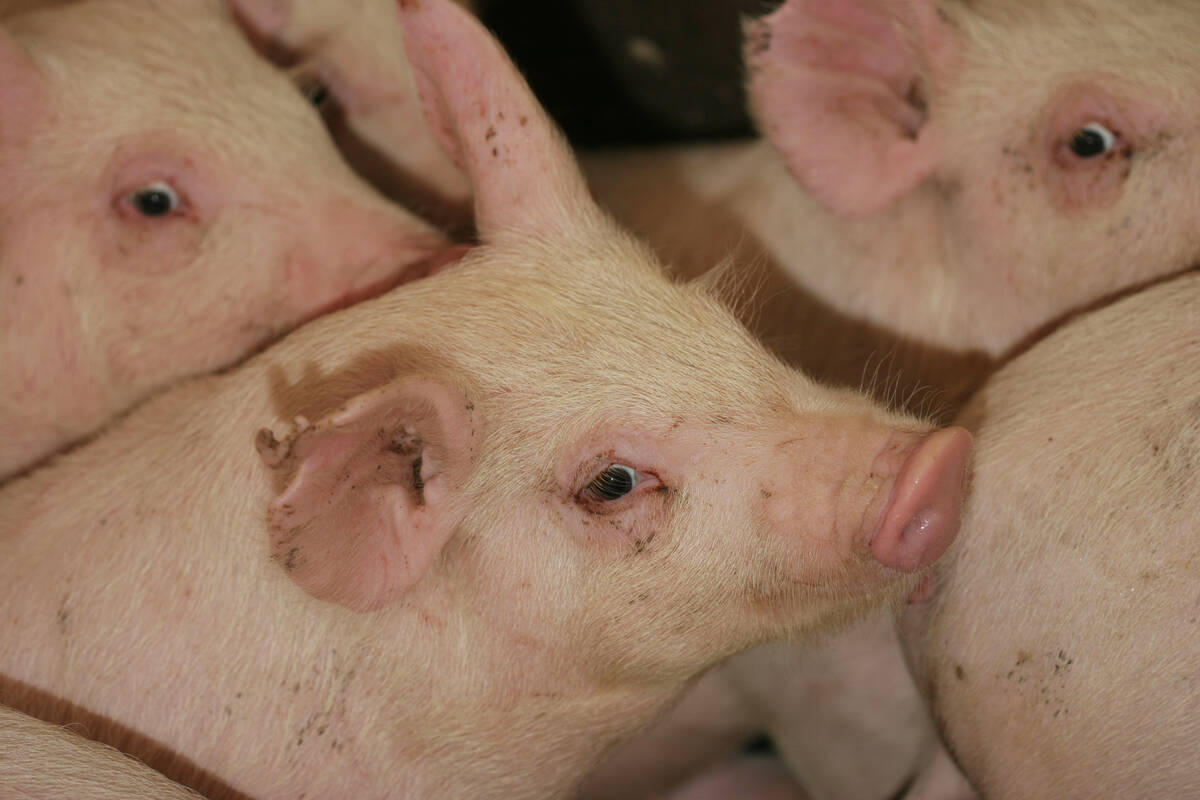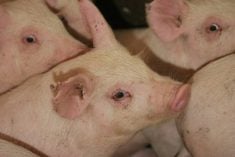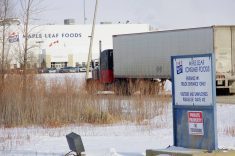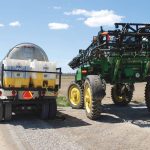PONOKA, Alta. – A cow at the de Gier dairy farm can be milked at any time of the day or night.
Brothers Poul and Hendrik de Gier of Ponoka have installed a robotic milker in a new barn and have another on order for a barn under renovation.
Poul de Gier said the cows now look after their own milking schedule, giving him more time to spend on better cow husbandry, other farm work and sleeping in until 7 a.m.
“The biggest benefit is the flexibility and the animal performance,” he said.
Read Also

The Western Producer Livestock Report – September 25, 2025
The U.S. national live price average for barrows and gilts was $81.21 Sept. 17. It was $78.37 Sept. 9. U.S. hogs averaged $106.71 on a carcass basis Sept. 17, up from $106.10 Sept. 9.
Since the de Giers installed the DeLaval robotic milker, 14,000 litres per cow per year have become the norm on their farm. The robot milks about 60 cows, and the results have been better than the de Giers expected in terms of production and improved health.
“Right now we are getting 2,000 kilograms a day on the robot. I think we can improve that,” de Gier said.
The system alerts the de Giers by cell phone if a problem occurs. They may have to manually place the cups on a cow, or a bossy cow may be blocking the entry to the milker. Like all dairies, the de Giers’ barn has backup generators in case of power failure.
Traffic flow design helps the cows learn where to go for milking, said Doug Seland of Catons, a dairy equipment supplier.
“When we started, it was 24 hours later and the cows got it and in two days he didn’t have to manually push any cows through,” Seland said.
“It is set up in a way that guides them.”
When the computer determines that a cow is ready to be milked, it allows the cow into a stainless steel chute with feed at one end. As the cow settles in, a robotic arm scans the udder with red laser lights. It adjusts for size and height of the udder, cleans the teats, places the cups and starts milking. If the cow kicks or flinches, the machine continues to try to place the cups.
Some cows will kick off a cup when the quadrant is empty, and some fidget when they enter, but the de Geirs have found the robotic arm is sturdy enough to withstand a cow’s kicks.
The computer recognizes a cow’s personal identification number and measures the amount of milk and other data.
The robotic arm has an optical camera and dual lasers to ensure fast and accurate teat location and attachment. When milking is complete, the system washes off the front of the camera and the floor and prepares for the next cow.
The system releases the cow from the milking chute and mechanically sorts it either to the stalls, a feeding station or to a pen for breeding.
Electronic necklaces on the cows identify them at the milker and feeders.
Computers connect the system to the main farm office and the equipment supplier.
The milking area is relatively quiet. All that is heard are hydraulics and pumps running rhythmically. The cows generally appear quiet and patient as they wait their turn to enter.
De Gier said the system is not a substitute for good management, quality feed or cow comfort.
His farm records show the cows are visiting the station 2.7 times per day. Fresh cows may come for milking four or five times while another cow toward the end of a lactation period may come once a day.
The farm is still working on the problem of bossy cows that try and prevent others from entering the system. When the de Giers renovate their other barn they are considering adding another exit so heifers and timid cows can escape.
When the system was installed two years ago the brothers noticed a few cows were too long or their hips were too wide to fit comfortably.
Some cows do not like the system, and the brothers now rate replacements based on robotic milking suitability as well as on their feet, legs and udders.
“They have to have good feet and udders and legs but also what are their characters with the robot,” de Gier said.
He expects the robotic system will allow the farm to produce the same amount of milk or more with fewer cows.
“Once we see how long the cows are going to last and what kind of production they are going to hold, we can make some decisions,” he said.
“The cows that don’t fit are going to get out. I think we are going to have a surplus of cows.”
Seland said this type of system is found mostly in Quebec and Ontario. Owners need to figure out their costs and savings when considering purchase.
“It is not going to take over the entire parlour because you are a bit limited to about 60 cows (per robot),” he said.















